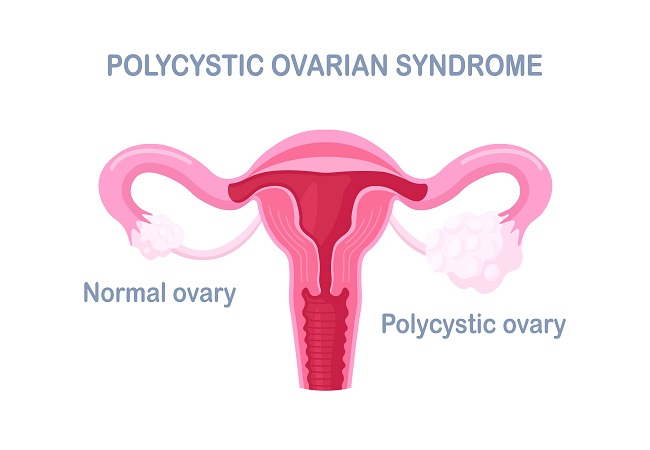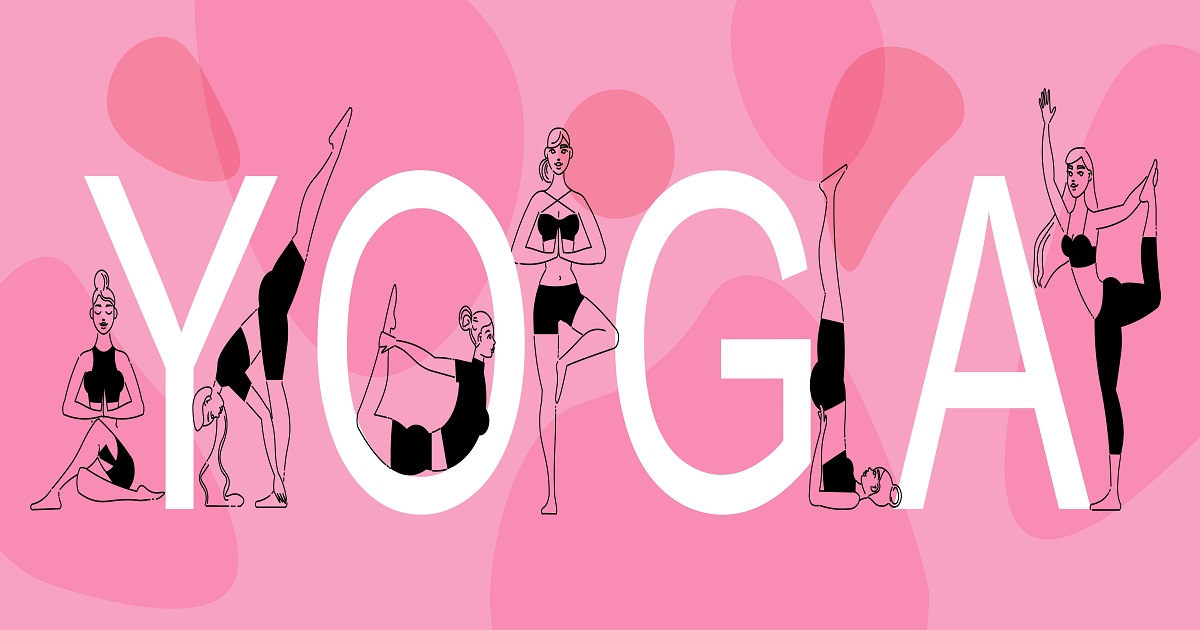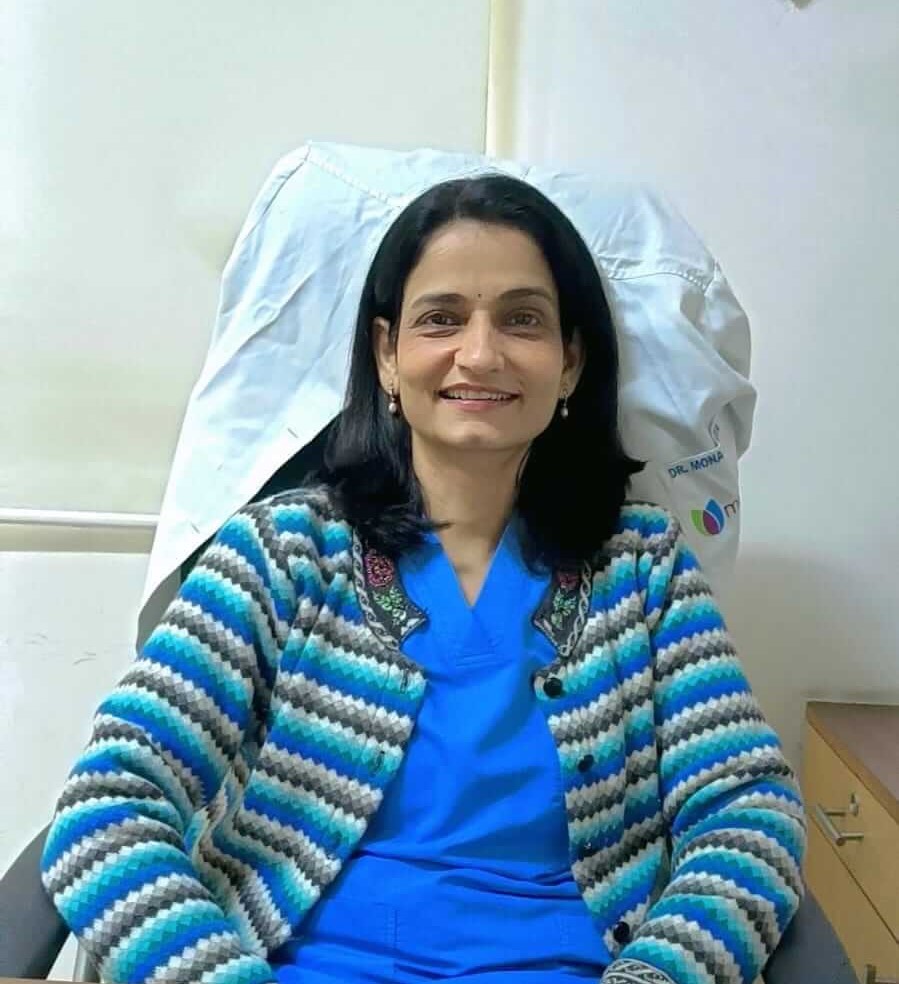Yoga for PCOS & PCOD: 7 Yoga Poses for PCOD & PCOS
What is PCOD?

PCOD (Polycystic Ovarian Disease)
Yoga for PCOS -Polycystic Ovary Disease (PCOD), also known as Polycystic Ovary Syndrome (PCOS), is a hormonal imbalance that affects women of reproductive age. It manifests in various ways, including irregular periods, excessive hair growth, acne, and weight gain. Although its exact cause remains unknown, factors such as genetics, insulin resistance, and inflammation have been linked to its occurrence.
Living with PCOD can be challenging, but don’t lose hope. There are natural ways to manage its symptoms and improve your overall well-being. One such method is Yoga for PCOD, a powerful tool that can work wonders for your body and mind.
How Yoga Can Help in PCOD & PCOS
Yoga Poses for PCOD – Ever wondered how something as simple as yoga can help with a complex hormonal condition like PCOD? Let’s dive into the science behind it.
Balancing Hormones and Reducing Stress
Yoga has been found to influence the endocrine system, regulating hormone production and secretion. This is particularly beneficial for women with PCOS & PCOD, as it can help restore hormonal balance. Moreover, yoga helps to reduce stress levels by activating the parasympathetic nervous system, which can be responsible for the “rest and digest” mode. Lower stress levels can, in turn, reduce cortisol production, a hormone known to worsen PCOD symptoms.
- Improving Insulin Sensitivity: Insulin resistance is a significant factor in PCOD. Regular yoga practice has been shown to improve insulin sensitivity, helping the body to use insulin more efficiently. This not only helps manage PCOD symptoms but also lowers the risk of developing type 2 diabetes.
- Promoting Weight Loss: Weight gain is a common concern for women with PCOD. Yoga, when combined with a healthy diet, can help you shed those extra pounds. It boosts metabolism, enhances digestion and aids in toning muscles, all of which contribute to weight loss.
Yoga for PCOS & PCOD: 7 Yoga Poses for PCOD & PCOS

PCOD Yoga Pose
1. Supta Baddha Konasana (Reclining Bound Angle Pose)
Benefits: This gentle pose opens the hips, alleviates menstrual discomfort, and calms the nervous system.
Instructions:
- Lie on your back with your arms at your sides and your palms facing up.
- Bend your knees and bring the soles of your feet together, allowing your knees to fall open to the sides.
- Adjust the distance between your feet and your pelvis, finding a comfortable stretch in your inner thighs.
- Breathe deeply and relax, holding the pose for 3-5 minutes.
2. Bhujangasana (Cobra Pose)
Benefits: This backbend strengthens the spine, tones the abdominal muscles, and enhances blood circulation in the pelvic region.
Instructions:
- Lie face down on your mat with your legs extended and the tops of your feet on the floor.
- Place your hands under your shoulders, keeping your elbows close to your body.
- Inhale and lift your chest off the floor, engaging your back muscles and slightly using your arms for support.
- Keep your shoulders relaxed, and avoid compressing your lower back. Hold for 15-30 seconds before releasing on an exhale.
3. Dhanurasana (Bow Pose)
Benefits: This pose stretches the entire front body, stimulates the reproductive organs, and strengthens the back muscles.
Instructions:
- Lie face down on your mat with your arms at your sides and your legs hip-width apart.
- Bend your knees, bringing your heels close to your buttocks.
- Reach back and grasp your ankles or the tops of your feet.
- Inhale and lift your chest and thighs off the floor, balancing on your abdomen.
- Hold for 15-30 seconds, breathing deeply, before releasing on an exhale.
4. Ardha Chandrasana (Half Moon Pose)
Benefits: This balancing pose tones the thighs, buttocks, and hips while enhancing digestion and relieving anxiety.
Instructions:
- Begin in Trikonasana (Triangle Pose) with your right hand on the floor or a yoga block, and your left hand on your left hip.
- Shift your weight onto your right foot and slowly lift your left leg parallel to the floor.
- Keep your right leg straight and engaged, and flex your left foot, pointing the toes away from you.
- Extend your left arm towards the sky, aligning it with your shoulders.
- Gaze upward, or maintain a neutral neck if that’s more comfortable. Hold it for 15-30 seconds, and then repeat on the other side.
5. Paschimottanasana (Seated Forward Bend)
Benefits: This calming pose stretches the hamstrings, back, and hips while stimulating the ovaries and uterus.
Instructions:
- Sit on your mat with your legs extended in front of you.
- Inhale and lengthen your spine, reaching your arms overhead.
- Exhale and fold forward from the hips, keeping your back straight and your chest open.
- Grab your shins, ankles, or feet, and gently pull yourself deeper into the pose.
- Hold for 30-60 seconds, breathing deeply, before releasing on an inhale.
6. Malasana (Garland Pose)
Benefits: This deep squat opens the hips, stretches the groin and back, and improves digestion.
Instructions:
- Begin in a standing position with your feet slightly wider than hip-width apart.
- Bend your knees and lower your hips into a squat, keeping your heels grounded if possible.
- Bring your palms together at your chest in a prayer position, and use your elbows to gently press your knees outward.
- Lengthen your spine and relax your shoulders, holding the pose for 30-60 seconds before releasing.
7. Setu Bandhasana (Bridge Pose)
Benefits: This backbend opens the chest, stimulates the thyroid gland, and strengthens the glutes and hamstrings.
Instructions:
- Lie on your back with your knees bent and your feet flat on the floor, hip-width apart.
- Place your arms at your sides, with your palms facing down.
- Inhale and lift your hips towards the sky, pressing into your feet and engaging your glutes.
- Keep your thighs parallel to each other and avoid compressing your lower back.
- Hold for 30-60 seconds, breathing deeply, before releasing on an exhale.
Also Read: PCOD Kya Hota Hai
How Yoga Benefits Symptoms of PCOS & PCOD:
The beauty of yoga is that it not only addresses the physical aspects of PCOD but also nurtures emotional well-being. Living with PCOS can take a toll on mental health, causing anxiety, depression, and low self-esteem. Yoga encourages mindfulness and self-compassion, helping you cultivate a deeper connection with your body and emotions. As you continue on your yoga journey, you’ll learn to embrace your body’s unique needs and develop a sense of gratitude for its resilience.
Incorporating yoga into your daily routine can also foster a sense of community. Joining a yoga class or online support group can connect you with others who share your experiences, providing an opportunity to learn and grow together.
Finally, don’t forget that managing PCOD is a holistic process. In addition to practicing yoga, it’s essential to maintain a balanced diet, get adequate sleep, and address any underlying medical conditions. It’s always a good idea to consult with a healthcare professional before starting any new exercise regimen, especially if you have any pre-existing health concerns.
Also Read: PCOD Diet Chart
Conclusion
Incorporating these seven yoga poses into your daily routine can significantly improve your PCOD symptoms and overall well-being. It’s always a good idea to consult a healthcare professional before starting a new exercise regimen, especially if you have any pre-existing health concerns.
As you embrace the healing power of yoga, remember that you are not alone in your PCOD journey. Connect with others who share your experiences, and support one another as you navigate the path towards balance and harmony. The road to wellness begins with a single step—or in this case, a single yoga pose.
Also Read: PCOD Problems After Marriage
F.A.Q
Q: Is PCOD cured by Yoga for PCOS?
A: While yoga cannot cure PCOD completely, it can be helpful in managing the symptoms of PCOD. Regular yoga practice can improve insulin sensitivity, reduce stress levels, and help in maintaining a healthy weight, which can all contribute to managing PCOD symptoms.
Q: Which is the best Yoga for PCOS?
A: Any exercise that promotes weight loss and reduces insulin resistance can be helpful for PCOD. Some of the best exercises for PCOD include cardio workouts like brisk walking, cycling, and swimming, as well as strength training exercises like weight lifting, resistance band training, and yoga.
Q: How do I permanently control PCOD?
A: PCOD cannot be permanently cured, but its symptoms can be managed through a combination of lifestyle changes, medication, and medical procedures. Eating a healthy diet, exercising regularly, managing stress levels, and taking prescribed medication can all help in controlling PCOD symptoms.
Q: How can I recover my PCOD naturally?
A: Some natural remedies that may help in managing PCOD symptoms include maintaining a healthy weight, eating a balanced diet that is low in processed foods and high in fiber, managing stress levels, and getting regular exercise. However, it’s important to consult with a healthcare professional before starting any new natural remedies.
Q: How do you permanently cure PCOD naturally?
A: There is no known natural cure for PCOD. While lifestyle changes such as diet and exercise can help in managing the symptoms of PCOD, medical treatment may be necessary for more severe cases.
Q: Can skipping reduce PCOD?
A: Skipping, or jumping rope, can be a good cardiovascular exercise that can help in reducing weight and improving insulin sensitivity, which can be helpful for PCOD. However, it should be done in combination with other exercises and under the guidance of a healthcare professional.
Q: How can I lower my PCOD in one month?
A: While it may not be possible to completely lower PCOD in one month, some lifestyle changes that may help in managing PCOD symptoms include eating a healthy diet that is low in processed foods and high in fiber, exercising regularly, managing stress levels, and taking prescribed medication as directed by a healthcare professional. However, it’s important to remember that PCOD is a complex condition and may require ongoing management.
Q: Can I reduce fat in PCOD?
A: Yes, reducing body fat can be helpful in managing PCOD symptoms. A combination of a healthy diet and regular exercise can help in reducing body fat and improving insulin sensitivity, which can be beneficial for PCOD.
Q: What foods remove PCOD?
A: While there is no specific food that can cure PCOD, a healthy diet that is low in processed foods and high in fiber can help in managing PCOD symptoms. Some foods that may be beneficial for PCOD include whole grains, fruits, vegetables, lean protein, and healthy fats.
Q: Which fruit is good for PCOD?
A: Fruits that are low in sugar and high in fiber can be helpful for PCOD. Some good fruit choices for PCOD include berries, apples, pears, kiwi, and grapefruit.
Q: Is PCOD a lifelong problem?
A: PCOD is a lifelong condition, but its symptoms can be managed with proper medical treatment and lifestyle changes.
Q: Can PCOD be cured permanently by Ayurveda?
A: While Ayurvedic treatments may be helpful in managing PCOD symptoms, there is no known cure for PCOD. It’s important to consult with a healthcare professional before starting any new Ayurvedic treatments.
Q: Can PCOD be cured with exercise?
A: While exercise cannot cure PCOD completely, regular exercise can be helpful in managing PCOD symptoms. Exercise can improve insulin sensitivity, reduce stress levels, and promote weight loss, which can all contribute to managing PCOD symptoms.
Q: Is PCOD cured after marriage?
A: PCOD is a lifelong condition, and marriage does not cure it. However, managing PCOD symptoms through proper medical treatment and lifestyle changes can help in leading a healthy and fulfilling life.
Q: Can PCOD be cured by surya namaskar?
A: While Surya Namaskar can be a good form of exercise for managing PCOD symptoms, it cannot cure PCOD completely. Managing PCOD symptoms often requires a combination of medical treatment and lifestyle changes.


